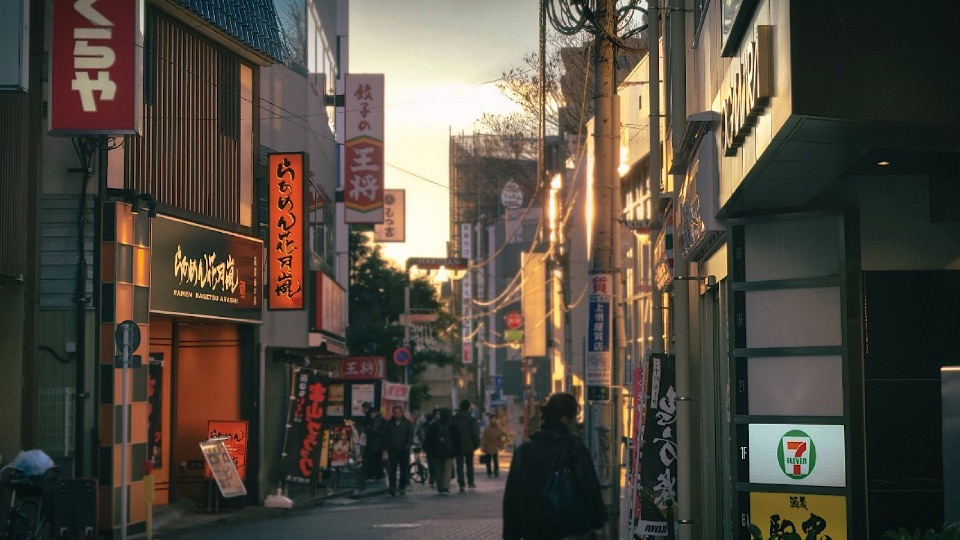22/8/2025 Ryo

There are many reasons I’m glad to have become an adult.
Fortunately, I’ve managed to avoid becoming one of those people who endlessly pine for the “good old days.”
One of the things I appreciate most is that I can now drink alcohol.
And I don’t just mean that in the literal sense.
As a kid growing up in the countryside, alcohol wasn’t something you bought at a store yourself. It arrived at the back door of our house along with salt, soy sauce, and other essentials—delivered by the local liquor store in what you might call a “Sazae-san” style.
Back in the days of “Tokkyuu” grade whisky, imported spirits were far beyond reach—not that I knew it then; I’ve only come to understand that as an adult.
Fast forward to today, and the act of drinking itself has become incredibly easy.
Convenience stores are open 24/7, and they carry a surprisingly decent selection of wine and whisky.
In that sense, the barrier to alcohol has never been lower.
But there’s a place that has always supported Japan’s drinkers—an institution that goes beyond convenience. That place is the “Nomiya-gai,” the bar districts—the underbelly of the city, some might say.
So when I say I’m glad I can “drink now,” I don’t mean simply putting alcohol to my lips.
I mean I can enter those places. I’m allowed into the world of the Nomiya-gai—and that, to me, is what truly matters.
Because drinking alcohol is easy. But learning how to truly enjoy it—that’s something you can’t master on your own.
You learn it from watching the veterans, the seasoned drinkers, those who have sat on the same stools night after night.
And it’s in the Nomiya-gai that these people live, in all their complexity and quiet wisdom.
Here in Suginami Ward, Tokyo, I’m surrounded by these pockets of old-school charm.
Bars, izakayas, yakitori joints, bistros, yakiniku places, and of course, the ever-mysterious snack bars…
These clusters of establishments form something close to sacred ground.
To those who haven’t matured emotionally, they can even feel uncomfortable—unwelcoming, almost.
Let me make one thing clear: I do not condone alcohol-related harassment or pressure.
But it’s also true that I’ve learned more than I ever expected from these drinking spaces.
They’ve become, in a way, more comforting than home.
Because the Nomiya-gai is not just a place to quench your thirst or fill your belly.
It’s a place filled with ways of living—with pain, with joy, with loneliness, with pride and little lies we tell ourselves.
It’s where human connection exists right alongside isolation.
It’s where we learn, through shared pain, how to walk the road of life.
And so once again, I find myself stepping into this intersection of lives.
Once again, I seek to heal the wounds of my soul.
(Though I still haven’t quite figured out how to deal with the hangovers.)
(原文)
自分が大人になって良かったと思うことは様々ある。(幸い昔は良かった、と言い続ける大人にはならずに済んだようだ)
その一つが、酒を飲めるようになったことだ。
そしてそれはその言葉通りの意味ではない。
子供の頃、田舎の生まれの自分は、酒の買い方はもっぱら自宅の裏口に、酒屋が塩や醤油などと共に日本酒やビールのケースを納品しにくるという、「サザエさんスタイル」が基本であった。ましてやウイスキー特級の時代には、洋酒は高嶺の花だった。(とはいえこれは大人になってから身につけた知識だが)
それに比べ今の時代、ただ酒を飲むだけなら、コンビニは24時間やっているし、それなりのワインやウイスキーも置いてありバリエーションも多い。
そういう意味では飲酒のハードルは下がったと言えるだろう。
一方で、昔から日本の酒飲み達を支えてきた場所がある。それが飲屋街、いわゆるドヤ街と言われる場所だ。
自分の言う、「お酒が飲めるようになった」と言うのはこの飲屋街に出入りすることができるようになったと言う意味とほぼ同意語である。
酒を口にするだけなら、先述したように昨今では非常に簡単な事だ。飲み続ければ強くもなるだろう。
だが、「酒の嗜み方」はどうやっても1人では身につかない。その為には、諸先輩方の背中を見て学ぶしかないのである。そしてそんな先輩方が多く生息しているのが飲屋街なのである。
そしてこの杉並区には、多くの古き良き飲み屋が存在する。
バー、居酒屋はもちろん、焼き鳥屋、ビストロ、焼肉屋、スナック…
これらが密集する地帯は、ある種の聖域なのだ。精神的に大人になれていない者にとっては、居心地の悪ささえ感じさせる。
ちなみにここまで書いた上ではっきりさせておくが、筆者は決してアルハラ容認派ではない。
とはいえ、そう言った飲みの場で学ぶ事は想像以上に多かったのも事実だ。
そして今や自分にとっては、そう言った場所は自宅以上に心安らぐ場所でもあるのだ。
飲屋街は、単に飢えと渇きを満たすだけの場ではない。そこには生き方があり、苦しみがあり、寂しさがあり、喜びがあり、ほんの少しの見栄と嘘がある。
そしてそこには人と人の繋がりがあり、孤独がある。
人はそうやって、痛みに耐えながらも人生を歩む術を学ぶのだ。
そんな人生の交差点に、今日も足を踏み入れる。そして今日も私は魂の傷を癒すのだ。
二日酔いに耐える術は、未だ学べていないのだが。
